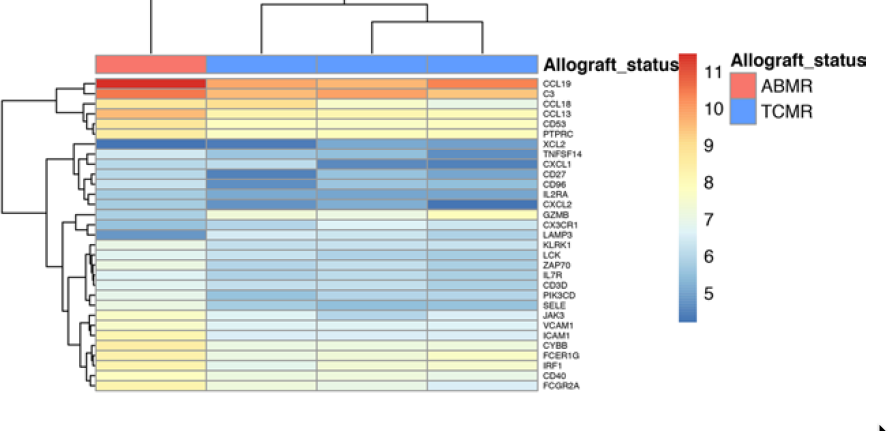Longitudinal immunological characterization of the first presensitized recipient of a face transplant
Abstract
Rejection affects greater than 80% of face transplants, yet no diagnostic criteria for antibody mediated rejection (AMR) following face transplantation have been established. Given that different treatment strategies are required to address AMR and T cell–mediated rejection (TCMR), there is a critical need to delineate the features that can differentiate these two alloimmune responses. Here, we report the longitudinal immunological examination of what we believe to be the first and only highly sensitized recipient of a crossmatch-positive face transplant up to 4 years following transplantation. We conducted gene expression profiling on allograft biopsies collected during suspected AMR and TCMR episodes as well as during 5 nonrejection time points. Our data suggest that there are distinctive molecular features in AMR, characterized by over expression of endothelial-associated genes, including ICAM1, VCAM1, and SELE. Although our findings are limited to a single patient, these findings highlight the potential importance of developing and implementing molecular markers to differentiate AMR from TCMR to guide clinical management. Furthermore, our case illustrates that molecular assessment of allograft biopsies offers the potential for new insights into the mechanisms underlying rejection. Finally, our medium-term outcomes demonstrate that face transplantation in a highly sensitized patient with a positive preoperative crossmatch is feasible and manageable.
Authors
Thet Su Win,1,2 Naoka Murakami,3 Thiago J. Borges,3 Anil Chandraker,3 George Murphy,4 Christine Lian,4 Victor Barrera,5 Shannan Ho Sui,5 David Schoenfeld,6 Jessica Teague,2 Ericka Bueno,1 Stefan G. Tullius,7 Bohdan Pomahac,1 Rachael A. Clark,2 and Leonardo V. Riella3
JCI Insight. 2017 Jul 6;2(13). pii: 93894. doi: 10.1172/jci.insight.93894.
Figure
Gene expression profiling of allograft skin biopsies suggests distinctive features in the suspected AMR episode compared with TCMR episodes. 80 genes were ranked using the absolute value of their loadings from the first principal component, which was thresholded at 0.1, to identify those contributing most to the observed variability between AMR and TCMR. This yielded 31 genes. The heatmap shows the expression of these 31 genes. Each column represents a facial allograft biopsy, labeled according to whether it was collected during the suspected AMR (red) or TCMR (blue) episodes. The expression of these genes clustered the samples according to the type of rejection.

